Welcome to our free classical music site

Do you write about classical music? Are you a blogger? Want to team up with Classical Connect? Send us a message, let's talk!

Do you write about classical music? Are you a blogger? Want to team up with Classical Connect? Send us a message, let's talk!
October 7, 2013
Verdi 200! This is a very special occasion: on October 10 the great master of Italian opera, Giuseppe Verdi, turns 200 (he might have been born on October 9, but what does it matter!). We’re poor on Verdi’s music: opera houses don’t share their recorded operas with us, neither do the major labels, so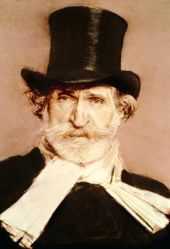 all we can do to celebrate is borrow from YouTube. We’ve previously written about Verid’s life, so today we’ll just present four magnificent selections from his operas Rigoletto, La Traviata, Il Trovatore, and Aida. Rigoletto was composed in 1851. Verdi was a well-known composer by then, but Rigoletto, written for and premiered at the Venetian theater La Fenice, was an unparallel success. The next day people sung the Duke’s aria La donna è mobile on the streets. Enrico Caruso, one of the most famous Dukes, and Nellie Melba performed the opera in 1902 in the Covent Garden. The quartet Bella figlia dell'amore (Beautiful daughter of love) from Act III is one of the highlights of the opera. Here it is, with Joan Sutherland, still in her prime at 61, as Gilda, Luciano Pavarotti, in great form as the Duke, Leo Nucci as Rigoletto and Isola Jones as Maddalena (we cut out most of the ovation, which ran for six minutes straight, more than the Quartet itself).
all we can do to celebrate is borrow from YouTube. We’ve previously written about Verid’s life, so today we’ll just present four magnificent selections from his operas Rigoletto, La Traviata, Il Trovatore, and Aida. Rigoletto was composed in 1851. Verdi was a well-known composer by then, but Rigoletto, written for and premiered at the Venetian theater La Fenice, was an unparallel success. The next day people sung the Duke’s aria La donna è mobile on the streets. Enrico Caruso, one of the most famous Dukes, and Nellie Melba performed the opera in 1902 in the Covent Garden. The quartet Bella figlia dell'amore (Beautiful daughter of love) from Act III is one of the highlights of the opera. Here it is, with Joan Sutherland, still in her prime at 61, as Gilda, Luciano Pavarotti, in great form as the Duke, Leo Nucci as Rigoletto and Isola Jones as Maddalena (we cut out most of the ovation, which ran for six minutes straight, more than the Quartet itself).
La Traviata was composed just two years later, in 1853. It’s based on a then very popular novel by Alexandre Dumas fils, La Dame aux camélias (The Lady of the Camellias), a tragic love story of a courtesan suffering from tuberculosis and a provincial bourgeois. The novel was adapted for the theater, and Verdi saw the play during his visit to Paris in 1852. The libretto was written by Verdi’s favorite, Francesco Maria Piave (he also wrote the libretto for Rigoletto). Margurite of Dumas became Violetta, and Armand – Alfredo. Here is the famous duet from Act III: Parigi, o cara, noi lasceremo ("We will leave Paris, O beloved"). Alfredo is Jose Carreras and Violetta – the incomparable Renata Scotto.
The years 1851 through 1854 were incredibly productive for Verdi. He worked on Il Trovatore and La Traviata practically at the same time: the former was premiered on January 19, 1983, the latter – on March 6. Il Trovatore (The Troubadour) was based on a play by the Spanish dramatist Antonio García Gutiérrez. Set in the 15th century, Il Trovatore tells a complicate story of Manrico, the troubadour; Count di Luna, a nobleman; Leonora, who is in love with Manrico but is pursued by di Luna, and Azucena, a gipsy. In Act IV, with both Manrico and Azucena being imprisoned by di Luna, Leonora begs him to free them. This duet, Miserere (Lord, Thy mercy on this soul) is performed by Maria Callas, La Divina, probably the most expressive soprano of the 20th century and a perfect Leonora, and Tito Gobbi, one of the greatest Verdi baritones.
Aida was written almost 20 years later, in 1871. The opera was commissioned by Ismail Pasha, the Ottoman Governor of Egypt. It was premiered in Cairo and then staged, to enormous success, in all major opera theaters of the world, from Teatro Colon in Buenos-Aires to the Vienna State Opera to the Covent Garden in London and Mariinsky in St-Petersburg. The story is set in ancient Egypt. Aida, the Ethiopian princess, is captured by the Egyptians. Radames, Egypt’s military commander, falls in love with her. Unfortunately for both of them, the Pharaoh’s daughter Amneris loves Radames. In the end, Radames is put on trial for treason, then sealed up in a dark vault and left there to die. There he finds Aida who, in longing to share his fait, hid in what would become their tomb. They bid farewell to life and sing of their love. On top of the vault, Amneris weeps and prays. You can hear the "Tomb scene" as performed by the supreme singers, Montserrat Caballé and Plácido Domingo. Fiorenza Cossotto is Amneris. Riccardo Muti leads the New Philharmonia Orchestra.
The music in the four excerpts above runs for just 20 minutes, but it is 20 minutes of pure genius. Viva maestro and Buon compleanno!
September 30, 2013. Paul Dukas and Marc-Antoine Charpentier. The French composer Paul Dukas is know mostly for his orchestral poem The Sorcerer's Apprentice, but it’s such a lovely piece that it alone places Dukas’ name alongside the best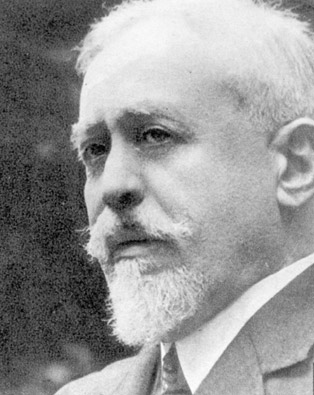 French composers of the late 19th century. Paul Dukas was born in Paris on October 1, 1865 into a well to do Jewish family; his father was a banker. Apparently Dukas didn’t show any special musical talents till the age of 14, when, while recovering from an illness, he started composing. Two years later he entered the Paris Conservatory, where he met Claude Debussy; the two became close friends. In 1888, Dukas failed to win the prestigious Prix du Rome (Debussy had won it four years earlier) and disappointed, left the Conservatory. After a stint in the army he started his second career as a music critic. As a composer, Dukas was very self-conscious and, if dissatisfied, would destroy his own music: the list of pieces he rejected is almost as long as those that he published. His first big composition, Symphony in C Major, was premiered in1896 to mixed reviews. Then, a year later, he wrote The Sorcerer's Apprentice, a symphonic piece inspired by Goethe’s poem by the same name. The poem describes an apprentice of an old sorcerer, who, when left alone, performs small magic, making a broom fetch water for him. Unfortunately, he doesn’t know how to break the spell and almost drowns, but the old sorcerer arrives just in time to restore order. The work is programmatic and almost literally descriptive in the way it follows the development of Goethe’s poem (in this it reminds one of Richard Strauss’s Till Eulenspiegel's Merry Pranks, with it’s Till’s theme and the representation of people and events). The music immediately became very popular, eclipsing everything else Dukas wrote either before or after. In 1899 he composed a rather successful opera Ariane et Barbe-bleue. He continued writing music till 1912, after which he turned to teaching. Maurice Duruflé, Olivier Messiaen, Manuel Ponce, Joaquín Rodrigo were among his students. Dukas died in 1935 aged 69. You can hear The Sorcerer's Apprentice in the recording by the Cincinnati Symphony Orchestra, Jesús López-Cobos conducting.
French composers of the late 19th century. Paul Dukas was born in Paris on October 1, 1865 into a well to do Jewish family; his father was a banker. Apparently Dukas didn’t show any special musical talents till the age of 14, when, while recovering from an illness, he started composing. Two years later he entered the Paris Conservatory, where he met Claude Debussy; the two became close friends. In 1888, Dukas failed to win the prestigious Prix du Rome (Debussy had won it four years earlier) and disappointed, left the Conservatory. After a stint in the army he started his second career as a music critic. As a composer, Dukas was very self-conscious and, if dissatisfied, would destroy his own music: the list of pieces he rejected is almost as long as those that he published. His first big composition, Symphony in C Major, was premiered in1896 to mixed reviews. Then, a year later, he wrote The Sorcerer's Apprentice, a symphonic piece inspired by Goethe’s poem by the same name. The poem describes an apprentice of an old sorcerer, who, when left alone, performs small magic, making a broom fetch water for him. Unfortunately, he doesn’t know how to break the spell and almost drowns, but the old sorcerer arrives just in time to restore order. The work is programmatic and almost literally descriptive in the way it follows the development of Goethe’s poem (in this it reminds one of Richard Strauss’s Till Eulenspiegel's Merry Pranks, with it’s Till’s theme and the representation of people and events). The music immediately became very popular, eclipsing everything else Dukas wrote either before or after. In 1899 he composed a rather successful opera Ariane et Barbe-bleue. He continued writing music till 1912, after which he turned to teaching. Maurice Duruflé, Olivier Messiaen, Manuel Ponce, Joaquín Rodrigo were among his students. Dukas died in 1935 aged 69. You can hear The Sorcerer's Apprentice in the recording by the Cincinnati Symphony Orchestra, Jesús López-Cobos conducting.
We’ll stay in France for a little longer to salute another composer who lived two centuries earlier: Marc-Antoine Charpentier (who should not be confused with another Charpentier, Gustave, a contemporary of Dukas and the author of the opera Louise). We don’t know his date of birth, except that it was in 1643. Marc-Antoine was probably born in Paris, got a good education and spent some time in Rome, studying with the then-famous Roman composer Giacomo Carissimi. Upon returning to Paris he found employment at the court of Mademoiselle Guise, the daughter of Charles, Duke of Guise and a cousin of King Louis XIV. Charpentier lived and worked in Hôtel de Guise for the next 17 years. He wrote music to the plays of Molière and Corneille and had his operas staged, even though Jean Baptiste Lully had a virtual monopoly over theatrical music. In 1679 Charpentier became the court composer for Grand Dauphin, the eldest son of the King and in 1698 he was appointed maître de musique for the Royal choir of Sainte-Chapelle. Charpentier died on February 24, 1704 in Sainte-Chapelle and was buried in the cemetery behind the choir. Here is one of the most famous of Charpentier’s compositions, the motet Te Deum. Charpentier wrote several settings, all between 1688 and 1698. This performance is by the Orchestra and the chorus of Accademia Nazionale Di Santa Cecilia, Myung-Whun Chung conducting.
PermalinkSeptember 23, 2013. Jean-Philippe Rameau and Dmitry Shostakovich. Two composers, both major figures during their lifetime, were born this week. One dominated the music scene during the reign of French King Louis XV, another was considered, officially (if not always), the greatest composer of the Soviet Union. That’s where the parallel ends however; it’s not just that two and a half centuries separate them: Rameau lived during the most brilliant period of French history; Shostakovich’s time was one of the most oppressive in all of the history of Russia. Jean-Philippe Rameau was born on September 25, 1683, when Louis XIV the Sun King ruled France, but he didn’t come to age as a composer till the 1720s; by then Louis XIV’s son was king. Rameau was approaching 50 when he wrote his first opera, but once he started, he wouldn’t write anything else. He wrote more than 30, and in toto they represent a major development in music history of the 18th century. His very first opera Hippolyte et Aricie, written in 1733, was premiered at the Palais-Royal, his second, Samson, had none other than Voltaire as the librettist. (Unfortunately, it was never performed, even though it went into rehearsals, and its score has been lost). The third opera, Les Indes galantes, was a big success. A curious historical anecdote relates to this opera. In 1725 the French settlers convinced several Indian chiefs, Agapit Chicagou among them, to go to Paris. Many Indian chiefs decided to travel to France, but as they were about to board the ship, it sunk; after the accident, most of the chiefs returned home. Apparently the ones who went had a good time in Paris and eventually were brought to Fontainebleau, were they met with the King. The chiefs pledged allegiance to the French crown, and later performed ritual dances at the Theatre Italien. Rameau was inspired by this event; the fourth act (entrées) of Les Indes galantes is called Les Sauvages and tells the story of a daughter of an Indian chief being pursued by a Spaniard and a Frenchmen.
Rameau wrote his 13th opera, Zaïs, in 1748. The highly imaginative Overture to the opera depicts the emergence of the four elements,Earth, Water, Air, and Fire, out of chaos. You can hear it in the performance by Les Musiciens Du Louvre under the direction of Marc Minkowski.
Dmitry Shostakovich, who was also born on September 25, 1906 in St.-Petersburg, Russia, is known mostly as a symphonist. This reputation is totally deserved: Shostakovich wrote 15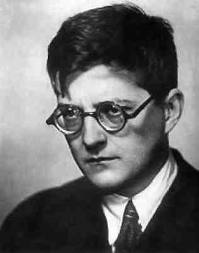 symphonies, many of them are among the most important music of the 20th century. He also wrote 15 string quartets, and often these were much more personal, less affected by the events of the day. In 1936 his opera Lady Macbeth of the Mtsensk District, which initially was hailed by the Soviet propaganda machine as a “result of the correct policy of the Party,” fell out of favor. The opera was denounced in Pravda. The same year, in a frightening episode, Shostakovich went to the Bolshoi Theater for a performance of Lady Macbeth only to find Stalin and members of the Politburo in the main box. To his horror they cringed as the music got loud and laughed during the love scenes. Shostakovich was “white as a sheet” when he took bows at the end of the opera. The Great Terror was gaining speed; many of Shostakovich’s friends, including his major patron, Marshal Tukhachevsky, were arrested and shot. His Fourth symphony was banned (officially, Shostakovich withdrew it voluntarily). Scared for his life, he wrote the Fifth Symphony in a much more conservative manner, and it was a great success, both with the public and the officials. This restored Shostakovich’s reputation: the official line was that he learned from his mistakes. That was when Shostakovich composed his first string quartet: the more chamber setting allowed him to experiment with the musical ideas he would not dare to expose in a symphony. You can hear the Quartet no. 1 in C Major op. 49 in the performance by the Borodin Quartet, a great ensemble with which Shostakovich collaborated for many years. This recording was made in 1978.Permalink
symphonies, many of them are among the most important music of the 20th century. He also wrote 15 string quartets, and often these were much more personal, less affected by the events of the day. In 1936 his opera Lady Macbeth of the Mtsensk District, which initially was hailed by the Soviet propaganda machine as a “result of the correct policy of the Party,” fell out of favor. The opera was denounced in Pravda. The same year, in a frightening episode, Shostakovich went to the Bolshoi Theater for a performance of Lady Macbeth only to find Stalin and members of the Politburo in the main box. To his horror they cringed as the music got loud and laughed during the love scenes. Shostakovich was “white as a sheet” when he took bows at the end of the opera. The Great Terror was gaining speed; many of Shostakovich’s friends, including his major patron, Marshal Tukhachevsky, were arrested and shot. His Fourth symphony was banned (officially, Shostakovich withdrew it voluntarily). Scared for his life, he wrote the Fifth Symphony in a much more conservative manner, and it was a great success, both with the public and the officials. This restored Shostakovich’s reputation: the official line was that he learned from his mistakes. That was when Shostakovich composed his first string quartet: the more chamber setting allowed him to experiment with the musical ideas he would not dare to expose in a symphony. You can hear the Quartet no. 1 in C Major op. 49 in the performance by the Borodin Quartet, a great ensemble with which Shostakovich collaborated for many years. This recording was made in 1978.Permalink
September 16, 2013. Catching up: recent anniversaries. We’ve missed several significant musical anniversaries during the past two weeks and we’re rectifying the omissions, however briefly, this week. Antonin Dvořák was born on September 8, 1841 in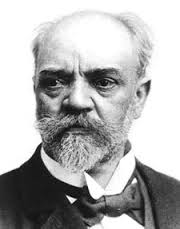 Nelahozeves, a village near Prague, then part of the Austrian Empire. Dvořák studied at the organ school in Prague and later, starting in 1862, played the viola in the Bohemian Provisional Theater Orchestra (in 1866 Bedřich Smetana became the orchestra’s chief conductor). Around that time Dvořák started seriously composing – his first two quartets were written in 1861 and ’62. In 1874, Dvořák submitted 15 works, including two symphonies, to the jury of the Austrian State Stipendium. Johannes Brahms and Eduard Hanslick were on the board (we mentioned Hanslick’s name recently when we wrote about Anton Bruckner – he was Brahms’s friend and a major Bruckner detractor). The influential Brahms was very impressed with the talent of the young Czech composer and Dvořák received the stipend. After that, Brahms became a supporter, and introduced Dvořák to Fritz Simrock, the owner of one of the largest publishing houses in Europe. In 1877 Simrock commissioned a piece, Symphonic Variations, which eventually became one of Dvořák’s most popular compositions (the 1877 Prague premier was not very well received, but Hanslick wrote to Dvořák that Brahms was very enthusiastic. Ten years later Hans Fisher conducted it in Vienna to a great success). You can hear it in the performance by the London Symphony Orchestra, the late Sir Colin Davis conducting.
Nelahozeves, a village near Prague, then part of the Austrian Empire. Dvořák studied at the organ school in Prague and later, starting in 1862, played the viola in the Bohemian Provisional Theater Orchestra (in 1866 Bedřich Smetana became the orchestra’s chief conductor). Around that time Dvořák started seriously composing – his first two quartets were written in 1861 and ’62. In 1874, Dvořák submitted 15 works, including two symphonies, to the jury of the Austrian State Stipendium. Johannes Brahms and Eduard Hanslick were on the board (we mentioned Hanslick’s name recently when we wrote about Anton Bruckner – he was Brahms’s friend and a major Bruckner detractor). The influential Brahms was very impressed with the talent of the young Czech composer and Dvořák received the stipend. After that, Brahms became a supporter, and introduced Dvořák to Fritz Simrock, the owner of one of the largest publishing houses in Europe. In 1877 Simrock commissioned a piece, Symphonic Variations, which eventually became one of Dvořák’s most popular compositions (the 1877 Prague premier was not very well received, but Hanslick wrote to Dvořák that Brahms was very enthusiastic. Ten years later Hans Fisher conducted it in Vienna to a great success). You can hear it in the performance by the London Symphony Orchestra, the late Sir Colin Davis conducting.
In 1880s Dvořák became known internationally, with Hans Richter conducting his work in London and Vienna. In 1892 Dvořák was invited to New York to head The National Conservatory of Music of America. He stayed there three years, during which he wrote such things as Symphony No.9, "From the New World", and the American quartet in F Major. He also wrote a piano cycle of eight short pieces called Humoresques. The seventh piece, in G flat Major, became extremely popular. Here it is, from one of our recent uploads, in the performance by the Czech pianist Martin Kasik.
Darius Milhaud was born on September 4, 1892 in Marseille. He went to study at the Paris Conservatory, where he met Arthur Honegger and Germaine Tailleferre. From 1917 to 1919 Milhaud lived in Brazil, serving as the secretary to Paul Claudel, the famous poet and playwright, who at the time was the French ambassador to Brazil. While there, Milhaud became influenced by Brazilian folk music. One of the tunes he liked, an old tango, was called The Ox on the Roof. Milhaud used it (and many other folk tunes) in his ballet, which he named after the tango, Le boeuf sur le toit, (The Ox on the Roof in French). It was premiered in February of 1920 to great success. By then Milhaud, Honegger and Tailleferre linked with Francis Poulenc, Georges Auric and Louis Durey, and became known as Les Six (The Six). Jean Cocteau, the poet, playwrite and filmmaker, joined the group, and all of them started frquenting a bar called La gaya. The music to Le boeuf sur le toit became very popular, and Milhaud, with Georges Auric, and Arthur Rubinstein often played a six-handed version of it on the piano in the bar. In 1920 the bar moved to a larger space and the owner gave it the name Le boeuf sur le toit. It became one of the most famous gathering places in all of Paris: its patrons included the veritable who-is-who of the French cultural avant-garde (it still exist, but as a posh restaurant and with no Bohemians in attendance). Here’s the complete Le boeuf sur le toit in the performance by Orchestre de l’Opera de Lyon, Kent Nagano conducting.
PermalinkSeptember 9, 2013. Embarrassment of the riches: Purcell, Schoenberg, Frescobaldi, Dvořák, Milhaud, Cherubini, Pärt. Last week we wrote about Anton Bruckner, but several other wonderful composers were born the same week: Antonin Dvořák and Darius Milhaud, and also Anton Diabelli, Johann Christian Bach, and Amy Beach. And this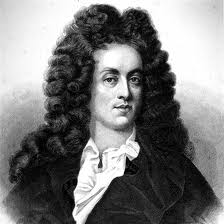 week continues with several more first-rate talents: from Girolamo Frescobaldi, who worked in the beginning of the 17th century to Henry Purcell at the end of it; to another Englishman, William Boyce, probably the most important English composer of the 18th century; to Clara Schumann, Robert’s wife and Brahms’s friend, a great pianist and important figure on the German music scene; to the revolutionary Arnold Schoenberg in the first half of the 20th century and finally to the Estonian composer Arvo Pärt at the end of it. We’ve written about most of these composers in the past and will commemorate them later in the year, but today we’ll mark Henry Purcell’s birthday, which is commonly presumed to fall on September 10, 1659. Purcell was born in Westminster, London. His father, Henry Purcell Sr., was a Gentleman of the Chapel Royal, where singers and musicians were trained to entertain the royal family. Several other members of the Purcell family were musicians, including Henry’s uncle and his younger brother, who also became a composer. Purcell’s father died when Henry was five, and his uncle became his guardian. He helped Henry to enter Chapel Royal as a chorister. When his voice broke, he found employment as an assistant to the Keeper of King’s instruments. Later, he tuned the organ of the Westminster Abbey. Purcell started composing at the age of nine. When he was 18, he succeeded Matthew Locke, a composer and music theorist, as the Composer of Charles II’s string orchestra. Two years later he was appointed the organist of the Westminster Abbey, after the composer and Purcell’s teacher John Blow resigned in favor of his pupil. Purcell’s life was short but it coincided with the turbulent period in England’s history at the end of the 17th century: as a youth he started serving King Charles II, then, after Charles’s death in 1685, he continued with King James II. He lived (and kept his positions) through the Glorious Revolution, and then worked for William III and his wife, Queen Mary II. Purcell died in 1695 at the age of 36 at the height of his career.
week continues with several more first-rate talents: from Girolamo Frescobaldi, who worked in the beginning of the 17th century to Henry Purcell at the end of it; to another Englishman, William Boyce, probably the most important English composer of the 18th century; to Clara Schumann, Robert’s wife and Brahms’s friend, a great pianist and important figure on the German music scene; to the revolutionary Arnold Schoenberg in the first half of the 20th century and finally to the Estonian composer Arvo Pärt at the end of it. We’ve written about most of these composers in the past and will commemorate them later in the year, but today we’ll mark Henry Purcell’s birthday, which is commonly presumed to fall on September 10, 1659. Purcell was born in Westminster, London. His father, Henry Purcell Sr., was a Gentleman of the Chapel Royal, where singers and musicians were trained to entertain the royal family. Several other members of the Purcell family were musicians, including Henry’s uncle and his younger brother, who also became a composer. Purcell’s father died when Henry was five, and his uncle became his guardian. He helped Henry to enter Chapel Royal as a chorister. When his voice broke, he found employment as an assistant to the Keeper of King’s instruments. Later, he tuned the organ of the Westminster Abbey. Purcell started composing at the age of nine. When he was 18, he succeeded Matthew Locke, a composer and music theorist, as the Composer of Charles II’s string orchestra. Two years later he was appointed the organist of the Westminster Abbey, after the composer and Purcell’s teacher John Blow resigned in favor of his pupil. Purcell’s life was short but it coincided with the turbulent period in England’s history at the end of the 17th century: as a youth he started serving King Charles II, then, after Charles’s death in 1685, he continued with King James II. He lived (and kept his positions) through the Glorious Revolution, and then worked for William III and his wife, Queen Mary II. Purcell died in 1695 at the age of 36 at the height of his career.
Purcell was a prolific composer: he wrote sacred music, songs, theater music, operas and the so-called semi-operas, in which music was mixed with dance and spoken word (English opera had to wait for Handel for its full development). Among his most famous compositions are the opera Dido and Aeneas (1688), and semi-operas The Fairy-Queen (1692) and The Indian Queen (1695). Here’s the famous aria When I Am Laid In Earth from Dido and Aeneas. It’s sung by the incomparable Jessye Norman. Purcell also wrote a number of instrumental compositions, many of them in the form of sonatas for two violin, bass viol (viola da gamba) and organ or harpsichord. On December 28th of 1694 Queen Mary died. The winter was very cold, and her embalmed body lay in state in Whitehall till March 5, when she was buried at Westminster Abbey. Purcell wrote Music for the Funeral of Queen Mary, one of his most popular pieces. Stanley Kubrick used part of it to great effect in his movie Clockwork Orange (the theme starts at the 11th minute of the recording). Eight months later Purcell was dead. The same Music was played on his funeral. He was also buried in Westminster Abbey, next to the organ. You can listen to the complete Music for the Funeral in the performance by The Sixteen, Harry Christophers conducting. Permalink
September 2, 2013. Anton Bruckner. This week we celebrate one of the most important composers of the 19th century, Anton Bruckner, who was born on September 4, 1824. Last year we attempted to give a broad overview of his life; this year we’ll focus on one of his symphonies,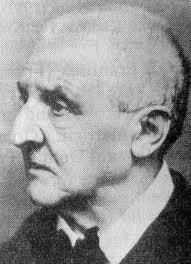 no. 5. Bruckner started working on the symphony in 1875 (he was 51 by then – he wrote his first symphony when he was already 41) and completed it the following year. Bruckner, who was born not far from Linz, had been living in Vienna and teaching music theory at the Vienna Conservatory. In 1875 he accepted a similar position at the Vienna University. In the preceding 10 years he already wrote five symphonies, most of them poorly received (Bruckner was so disheartened by the reception of the Symphony in D minor, which he wrote in 1869, that he refused to give it a number. It is now known as Symphony no. 0). Back in the 1860s and ‘70s the musical establishment in Vienna was divided between the devotees of Wagner and followers of Brahms. Bruckner worshiped Wagner’s music, and for that reason he became an enemy of a very influential critic and Brahms’s supporter Eduard Hanslick. Bruckner did have his own followers, one of them the young but very talented conductor Arthur Nikisch, who later premiered Bruckner’s Symphony no. 7. That support came not without considerable drawbacks: some conductors, such as Bruckner’s former pupil Franz Schalk, in an attempt to make his music more accessible to the Viennese public, performed it with numerous cuts and alterations to the scores. Sometime these changes were made without the composer’s knowledge, other times with the assent of the ever-insecure Bruckner.
no. 5. Bruckner started working on the symphony in 1875 (he was 51 by then – he wrote his first symphony when he was already 41) and completed it the following year. Bruckner, who was born not far from Linz, had been living in Vienna and teaching music theory at the Vienna Conservatory. In 1875 he accepted a similar position at the Vienna University. In the preceding 10 years he already wrote five symphonies, most of them poorly received (Bruckner was so disheartened by the reception of the Symphony in D minor, which he wrote in 1869, that he refused to give it a number. It is now known as Symphony no. 0). Back in the 1860s and ‘70s the musical establishment in Vienna was divided between the devotees of Wagner and followers of Brahms. Bruckner worshiped Wagner’s music, and for that reason he became an enemy of a very influential critic and Brahms’s supporter Eduard Hanslick. Bruckner did have his own followers, one of them the young but very talented conductor Arthur Nikisch, who later premiered Bruckner’s Symphony no. 7. That support came not without considerable drawbacks: some conductors, such as Bruckner’s former pupil Franz Schalk, in an attempt to make his music more accessible to the Viennese public, performed it with numerous cuts and alterations to the scores. Sometime these changes were made without the composer’s knowledge, other times with the assent of the ever-insecure Bruckner.
As all Bruckner’s symphonies, no. 5 consists of four movements. It starts with the pianissimo pizzicato of the slow Introduction, which evolves majestically into several major themes (Symphony no 5 is the only one by Bruckner that begins with a slow movement). Introduction is formally written in B-flat major, but tonality shifts almost continuously. Like the first movement, the second one also starts with a pizzicato (and so does the forth movement; for that reason one of the Symphony’s monikers is Pizzicato. The other common name is Tragic). The second movement, Adagio, is marked Sehr langsam or "very slow." The music moves from one thematic material to another, but the general tone of this movement is more lyrical than the mood of the first movement. The third movement, Scherzo Molto Vivace (very lively) is in D minor. The tempo of the last movement, Finale is marked as Adagio, the same as of the first movement, and indeed, it has a similarly leisurely opening. It reuses the theme first heard in the opening movement, but soon evolves into the new material. The amazing sonic structure that Bruckner builds in the Finale contains some of most interesting music he ever wrote.
The first performance of the symphony was conducted by Franz Schalk in 1894. Schalk made many cuts and changed some instrumentation, probably without Bruckner’s approval (Bruckner himself was ill and couldn’t attend the performance). We’ll hear the complete authentic 1878 version (it runs for one hour and 17 minutes) in the performance by Staatskapelle Dresden under the direction of Giuseppe Sinopoli. Sinopoli, who died of a heart attack in 2001at the age 54, was one a major Brucknerians of the late 20th century. You can also listen to the individual movements (just click on their titles).
Permalink